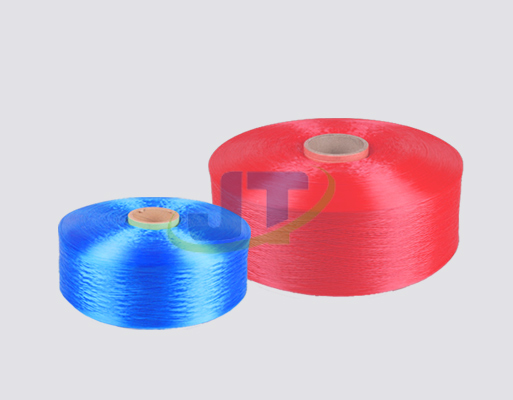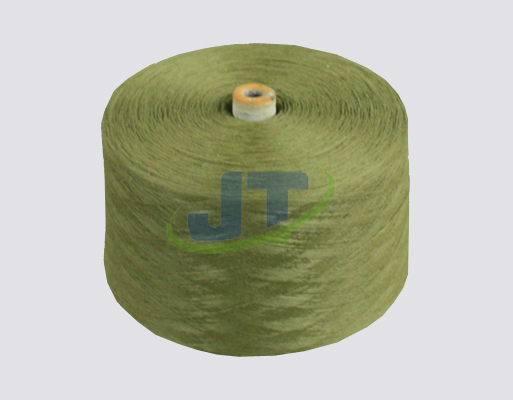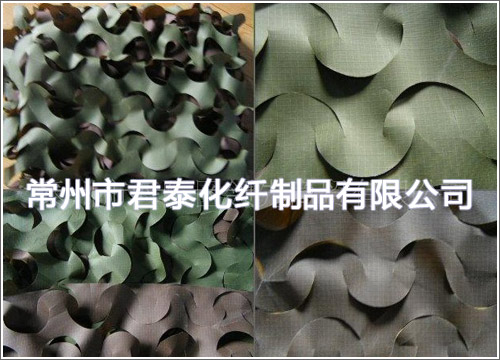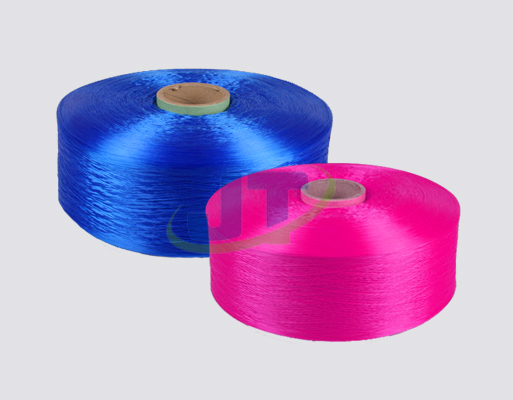

- Tel:0086-519-83783531
- cel:0086-13961177625
- E-mail:jianglijing1022@126.com
- add:cheng zhang Jia zeTown Wujin District, Changzhou City, Jiangsu Province
Since September, due to the out-of-control epidemic in India, many large-scale export-oriented textile companies in India have not been able to guarantee normal delivery. In order to ensure that supplies during the Thanksgiving and Christmas sales seasons are not affected, retailers in Europe and the United States have The orders were transferred to China for production, and the turnover of the factories soared by 5 times.
With the overall recovery of the textile and apparel industry, raw materials, cotton yarns, grey cloths, fabrics, etc. have soared, China's textile and apparel exports are facing severe tests. The textile and apparel export orders received in August and September may not be executed due to the substantial increase in production costs; another On the one hand, some foreign trade companies received orders from Europe, the United States, ASEAN and other countries and could not find suppliers and manufacturers to process on behalf of them. At present, there is a situation of "although there are many orders, but there are fewer next."
In addition, in anticipation of RMB appreciation, imported yarns are also in a "closed" state without quotation. In order to ensure production and delivery, a "cloth grabbing tide" has also begun in the textile industry.
According to the China Cotton Early Warning System survey of more than 90 designated textile companies across the country, raw material inventories and textile output of textile companies increased month-on-month, while yarn and cloth stocks declined.
In October, the price of cotton yarn inside and outside rose sharply. The average price of 32 domestic cotton yarns in October was 21,668 yuan/ton, an increase of 3156 yuan/ton from the previous month, and an increase of 556 yuan/ton from the same period last year, or 2.63%; the average monthly price of imported 32 cotton yarns was 21,601 yuan/ton , An increase of RMB 3006/ton from the previous month and RMB 409/ton from the same period last year, an increase of 1.93%.
Cotton has entered the rising range since May. According to statistics from the business agency, from April to September 2020, domestic lint prices have maintained an overall upward trend, with a cumulative increase of 1,811 yuan/ton, an increase of 16.31%. However, after entering October, the increase in cotton prices suddenly accelerated. As of October 19, the average domestic lint spot market price was reported at 14,948 yuan/ton, an increase of 2020 yuan/ton, or 14.62%, from October 1, an increase of 17.03 year-on-year %.
In addition, due to market rumors that affected by the La Ni愀 phenomenon, this year will be a cold winter once in 60 years, and down companies are hoarding goods, leading to insufficient supply. The prices of duck feather and down formed two peaks in May and October 2020 respectively. At the beginning of May, the price of white duck down with 90% down content rose to 180,000 yuan per ton. It has risen all the way since August and reached 290,000 yuan per ton in late October, which is a 61% increase from the price in May. The price is hovering around 280,000 yuan. The price of duck feathers has soared to 250,000 yuan/ton from mid-May for more than a month, and basically hovered between 200,000 and 270,000 yuan/ton from July to September. The price once rose to 400,000 yuan in October. Yuan / ton.
According to price monitoring, since mid-August this year, the domestic spandex market has been rising. As of November 16, the average ex-factory price of 40D was 40,800 yuan/ton. The increase in the past three months was 32.04%, a year-on-year increase of 28.87%.
Spandex manufacturers have also issued notices of price increases many times. On the one hand, it is mainly due to the increase in upstream costs. On the other hand, the downstream end customer orders have followed up well. The manufacturer’s previous backlog inventory has gradually cleared out, and the inventory level has dropped to a historical low, or even Part of the batch number is tight, and the price of each specification has risen by 1,000-2,000 yuan/ton from the beginning, and directly increased by 2,000-3,000 yuan/ton in the later period. The current 40D price of the factory ranges from 35,000-43,000 yuan/ton. The market is still strong, the industry is running at a high level near 90% of the start, and the supply of goods is still slightly tight.
Although the export performance of the textile industry is very good, the textile and apparel industry generally judges that some return orders are "emergency orders". Because it is not dominant in labor costs, these orders are difficult to stay in China for a long time.
Chi Mei PC ceased production, soaring 30%! 800,000 tons of ABS parking!
Good guys, PCs have been soaring since mid-October. Recently, Zhenjiang Chimei PCs have been completely discontinued due to malfunctions, which has added firewood to the PC rise!
According to market news, Zhenjiang Chimei's PABS device is also being discontinued. Among them, PC is expected to stop production for 1 month, and ABS is expected to stop production for 10 days. The circle of friends wailed directly, crying and there was no way to survive!
ABS increased by 50.79% and Zhenjiang Chimei’s 800,000 production lines underwent overhaul.
The average price of ABS in November was 17,498 yuan/ton, an increase of 5894 yuan/50.79% from last year's low of 11604 yuan/ton. Coincidentally, on the other hand, Zhenjiang Chimei's 800,000-ton ABS equipment also has problems. According to market rumors, this week’s 707K and 757K production lines had equipment failures and were closed for maintenance. The specific number of maintenance days is unknown. It is estimated that within 7 to 10 days, the loss of the overhaul will be about 3000 tons.
At present, the focus of the market is shifting upwards, the spot supply is tight, the overall market is bullish, and the PC has risen to the close! It is expected that in the next month, PC will continue to rise mainly.
Although the suspension of production of 800,000 tons of ABS for ten days can impact the market, the current ABS transaction is still acceptable, and it is expected that the high-level consolidation will be the main focus in the short term.
Recently, news of "closing stocks, suspending orders, and skyrocketing" is flying all over the world. In the two months of skyrocketing, many chemical raw materials have entered the 10,000 yuan era!
Last month, major international manufacturers such as BASF, DuPont and Landis announced price increases. The price of related raw materials in the industry chain has also been rising, and the replenishment business of downstream factories is biased towards rigid demand.
Judging from the substantial growth of raw materials, it can be seen that the pull of the downstream market is an important factor. For example, after basically controlling the epidemic, many downstream industries have recovered. Household appliances, furniture, mattress sponges, etc. have affected the polyurethane industry chain, such as MDI, TDI, propylene oxide, polyether and other raw materials and plastics. The rising prices of PC, ABS and GPPS have played a big role. India's recent return of orders to my country has also greatly increased the prices of many raw materials in the textile industry chain. In the future, the pull of industrial projects such as infrastructure will still lead to a large number of plastic chemical products, and the contradiction between supply and demand will inevitably trigger price changes.
On the other hand, the domestic chemical raw material industry is widely distributed in the phenomenon of "large companies". For example, in the MDI industry, five leading companies of Wanhua Chemical, BASF, Covestro, Huntsman and Dow Chemical account for 88% of global production capacity. %the above. In the TDI industry, BASF, Covestro, Wanhua Chemical and Cangzhou Dahua account for approximately 60% of production capacity. Coupled with the high overlap between the leading companies in TDI and MDI, the top five companies in the titanium dioxide industry account for half of the production capacity The epoxy resin in Huangshan area of Anhui accounted for more than 60% of the domestic market...In this oligopoly industry, it has a strong say in the market. This explains that under the influence of this epidemic, a weak market cannot stop the rhythm of price increases.
The hot trend has just begun. The textile industry's orders are queued up to May next year, and dimethyl carbonate is lined up until the Spring Festival next year. Many companies have already stopped quoting orders if they are not in the queue. This trend will gradually spread to many industries, and this rhythm also determines that the price of plastic chemicals will continue to soar, and even continue until the middle of next year, and the situation of "you can't buy goods with money" will be more frequent. Appear.
Please pay attention to textile workers who have recently received new orders
1. First confirm the price fluctuation trend of raw materials and whether the supply of raw materials is stable
2. Then judge whether there is a need to adjust the quotation or shorten the quotation period
3. In addition, foreign trade orders must also include exchange rate fluctuations into the quotation
4. To avoid the profit of orders being eaten up by other factors such as rising raw materials and appreciation of the renminbi
- Analysis of the Production Proce
- The global oil trade is shifting
- Let's take a look at the diversi
- China is directly facing the imp
- What are the core advantages of
- In November, the decline in Chin
- What is the value of Polypropyle
- The 2025 Textile Industry Discip
- The core performance advantages
- Black Friday is becoming a perfo




